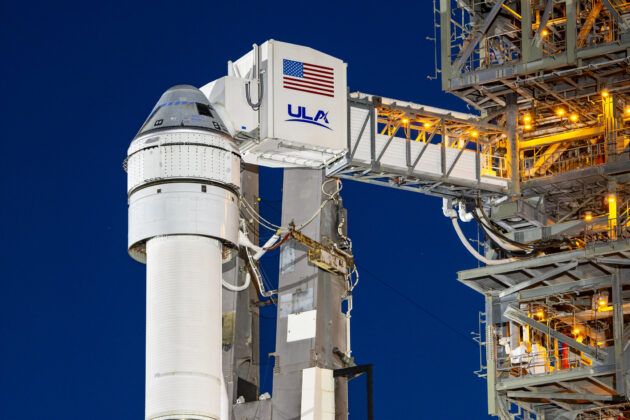Boeing’s Starliner space capsule, set to carry two NASA astronauts to the International Space Station, has been rescheduled for launch on May 21 due to technical difficulties. The initial launch attempt had to be postponed because of concerns over a valve on the rocket’s upper-stage oxygen tank. Following the replacement of the valve, engineers detected a small helium leak that was traced to a flange on one of the Starliner’s thrusters. Despite these challenges, NASA and Boeing are working on solutions to address the issue, with the launch now set for 4:43 p.m. ET on May 21. If successful, Starliner will become the second spacecraft, after SpaceX’s Crew Dragon, to be used for crew flights to the space station.
The delays and technical issues with Starliner have resulted in years of setbacks and over $1 billion in cost overruns for Boeing. Due to NASA’s fixed-price contract agreement, Boeing is responsible for covering the additional costs. However, the collaboration between NASA, Boeing, and United Launch Alliance continues as they work to ensure a successful mission for the Starliner space taxi. The rescheduled launch of Starliner will mark the first-ever crewed flight test of the space capsule, with astronauts Butch Wilmore and Suni Williams set to embark on a weeklong journey to the International Space Station and back.
Despite the challenges faced during the testing phase, NASA and Boeing are confident in their ability to resolve the technical issues and proceed with the launch of the Starliner spacecraft. The replacement of the faulty valve and ongoing testing of the thruster flange indicate progress towards a successful launch on May 21. The collaboration between NASA and its commercial partners is a testament to the dedication and expertise of the teams involved in the Starliner program, as they work tirelessly to overcome obstacles and ensure a safe and successful mission. The upcoming launch will be a significant milestone for Boeing, NASA, and the future of crewed spaceflight to the International Space Station.
The Starliner spacecraft and its Atlas V rocket were transported back to the Vertical Integration Facility at Cape Canaveral Space Force Station for further testing and analysis. The detection of the helium leak on one of the thrusters prompted engineers to investigate and develop solutions to address the issue. The collaboration between NASA, Boeing, and United Launch Alliance has been vital in identifying and resolving technical challenges to ensure the safety and success of the Starliner mission. The rescheduled launch date of May 21 provides additional time for the teams to complete on-the-ground testing and prepare for the historic crewed flight test of the Starliner space taxi.
The upcoming launch of Starliner will mark a significant achievement for NASA’s Commercial Crew Program and the future of American spaceflight. The successful deployment of the Starliner spacecraft to the International Space Station will demonstrate the capabilities of NASA and its commercial partners in advancing human space exploration. Despite the delays and technical challenges faced during the development of Starliner, NASA and Boeing remain committed to ensuring the safety and success of the mission. The rescheduled launch date of May 21 provides an opportunity for the teams to address any remaining issues and prepare for a successful crewed flight test of the Starliner space taxi.
Overall, the rescheduling of the Starliner launch to May 21 represents a pivotal moment in the history of human spaceflight. The collaboration between NASA, Boeing, and United Launch Alliance highlights the dedication and expertise of the teams involved in the Starliner program. The successful deployment of Starliner to the International Space Station will pave the way for future crewed missions and further advancements in space exploration. Despite the challenges and setbacks faced during the development of Starliner, the teams remain optimistic and determined to achieve the mission’s objectives. The launch of Starliner on May 21 will mark a significant milestone in the future of crewed spaceflight and cement the collaboration between NASA and its commercial partners in advancing human space exploration.


